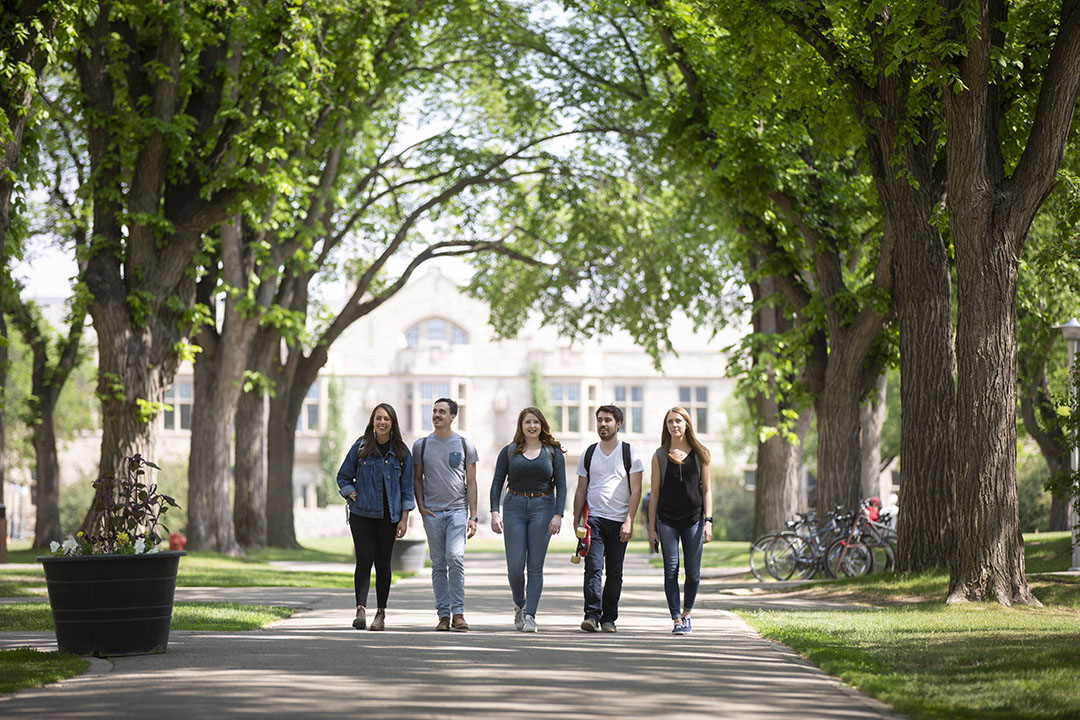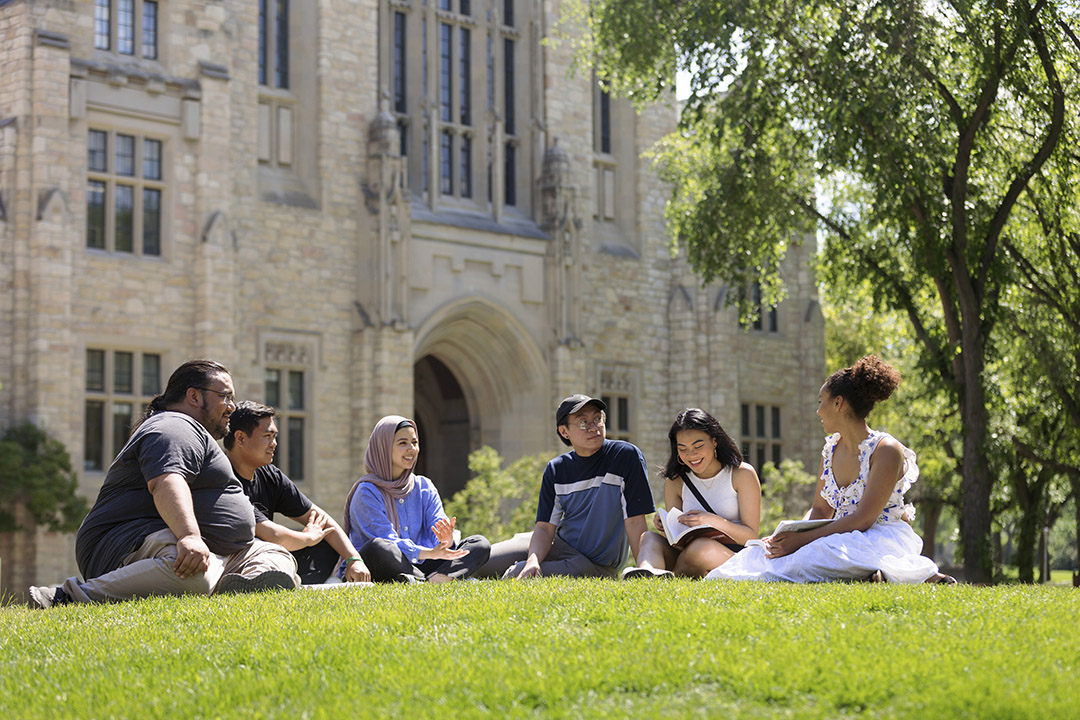
'Meet learners where they are at': Reflecting on student enrolment at USask
In the 2021/22 academic year, a record 26,155 students were enrolled at the University of Saskatchewan (USask), enrolment that has remained stable in the 2022/23 academic year.
By BROOKE KLEIBOERUSask strategic enrolment leaders have offered insight into this trend and have provided a glimpse into how the university community aims to be the future of higher learning in the years to come.
USask’s University Plan 2025 outlines a goal for growth in both undergraduate and graduate students, to help foster an inspired global community made up of well-rounded learners who are ready to tackle challenges, solve problems, and become graduates the world needs. Building a more diverse, inclusive and robust community allows for an enhanced student experience that will offer expanded opportunities for connections and collaboration while students are studying at USask.
"We have seen a significant increase, particularly in international student enrolment and new student enrolment over the past year,” said Pirita Mattola, acting senior director of strategic enrolment management at USask.
The university’s commitment to creating an inspired community of learners and graduates was steadfast during the height of the pandemic, adapting to keep access through innovation in learning and teaching methods.
“This [strong enrolment] has been a very positive sign as we’ve transitioned back to studying and teaching primarily in person,” said Mattola. “We’ve adapted and remained student-centred. This is the inspired hard work that so many of our teams across the institution have put in.”

Student experience on campus featured a major shift in the aftermath of the pandemic, with flexible learning options and new tools for communicating becoming the norm as educational activities were largely conducted through devices at home.
Dr. Nancy Turner (PhD), USask senior director of teaching and learning enhancement, points to this expanded flexibility and the ability to “meet learners where they are at” as value brought to the student experience that may have attracted new learners to USask.
“I go back to our aspiration to be what the world needs and I think to be what the world needs in the teaching, learning, and student experience space is understanding who our learners truly are,” said Turner.
“I think the collective efforts to advocate for our students and to stay responsive to their needs and to the changes in our external environment have been instrumental. These factors help explain why we are where we are right now,” added Mattola.
In the future, the USask strategic enrolment team hopes to continue building a global community of students in both the undergraduate and graduate sectors, with an increased focus on Indigenous student enrolment and creating more internationalization opportunities for students to be able to study in Canada and abroad.
“Our enrolment plan takes us up to 2025, so a lot of the conversations we’re having now are really about what are we going to do to get to the place we want to be, and what that place looks like in the next two years,” said Russell Isinger, interim vice-provost, Teaching, Learning and Student Experience, and the university registrar at USask.
“One of the priorities is student experience in the classroom, whether that is a traditional classroom or an online version. I think that’s an important conversation for the university to have, because that will underpin enrolment growth.”
Another priority for the strategic enrolment management team is focusing on expanding and growing opportunities for students at the USask Prince Albert campus. Determining the kinds of programming and supports that will benefit students of the Prince Albert campus and how they will be served by the main campus are key considerations moving forward.
“We are expanding our thinking of who our future learners are at the University of Saskatchewan and how they want to learn,” said Turner. “As an institution, we are responding to student needs to be the university the world needs from the student perspective.”
Dr. Airini (PhD), USask’s provost and vice-president academic, noted that Courageous Curiosity is a commitment in the University Plan, a forward-thinking, strategic document that is guiding the university to the year 2025. This commitment challenges USask to empower a culture of innovation, with the courage to confront humanity’s great challenges and opportunities. Setting the standard in learning is key to these opportunities at USask.
“USask has extraordinary breadth and depth in teaching. We will continue to inspire our students, faculty, and staff to be boldly curious as learners, researchers, scholars, and artists. In truth, we continue to be inspired by our students,” Airini said.
“As our University Plan states, bold curiosity is what fuels an innovative society. It’s the foundation for creative problem-solving, invention, and social and technological change—and universities like ours play a vital role in nurturing the curiosity that enables us to imagine a brighter, more sustainable future."
Together we will support and inspire students to succeed. We invite you to join by supporting current and future students' needs at USask.

